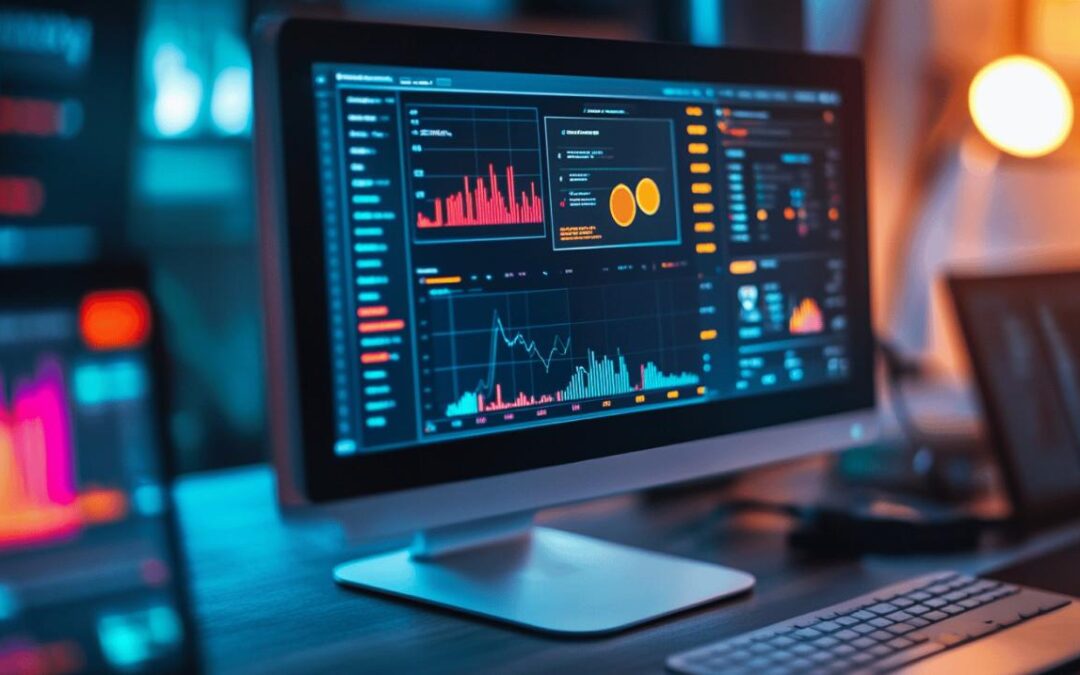Visual heat maps transform how online retailers understand customer behavior, offering unique insights into where visitors focus attention and interact with digital storefronts. By leveraging these visual analytics tools, e-commerce businesses can make data-driven design decisions that significantly boost conversion rates and enhance the shopping experience.
Understanding visual heat maps in e-commerce
E-commerce heat maps provide a color-coded graphical representation of visitor interactions on online store pages. These powerful visualization tools show exactly what attracts customer attention and what areas visitors ignore. The most engaging sections appear in warm colors like red, while less active regions display cooler colors such as blue. This visual data helps store owners identify optimization opportunities that traditional analytics might miss.
Key components of heat map analysis
Effective heat map analysis relies on several critical components to deliver actionable insights. User behavior tracking forms the foundation, capturing clicks, scrolls, and mouse movements across the site. Data segmentation allows retailers to filter results by specific user attributes or custom events, revealing patterns among different customer groups. The visual analytics component transforms raw data into easily interpretable color gradients. Many retailers integrate Punto Log systems to enhance the accuracy of user tracking by precisely matching content placement with actual engagement metrics.
Different types of heat maps for online stores
Online retailers can utilize various heat map types to gain comprehensive insights into customer behavior. Click maps reveal exactly where visitors tap or click, highlighting which elements receive the most interaction. Scroll maps use color gradients to show how far down pages users travel, helping optimize content placement and identify attention drop-off points. Move maps track mouse movements, indicating where users hover and focus their attention before making decisions. Mobile-specific heat maps are increasingly vital as mobile represents over 70% of global e-commerce spending, requiring different optimization approaches than desktop interfaces.
Implementing heat map insights for higher conversions
Visual heat maps have become essential tools for ecommerce optimization, providing valuable insights into user behavior that traditional analytics miss. These color-coded graphical representations show exactly how visitors interact with your online store through clicks, scrolls, and mouse movements. With ecommerce heat maps, you can identify hot zones where users focus their attention and cold areas they ignore, creating a roadmap for strategic improvements. By implementing these visual analytics effectively, online retailers can dramatically boost conversion rates through data-driven design decisions rather than guesswork.
Redesigning product pages based on heat map data
Product pages serve as crucial conversion points in your sales funnel, making them prime candidates for heat map analysis. By examining move maps, you can see precisely how desktop visitors read and interact with your product information. This visibility allows you to optimize placement of critical elements like product images, descriptions, price points, and call-to-action buttons. For instance, if click maps reveal that users are overlooking your add-to-cart button, repositioning it to a heat zone can significantly increase engagement. Many online stores have seen remarkable results from such adjustments – Trampoline Plezier increased their clickthrough rate from 22% to over 33% simply by adding strategically placed CTA buttons based on heat map insights.
Mobile optimization deserves special attention since mobile represents over 30% of ecommerce spending in the US and over 70% globally. Heat maps frequently reveal that mobile users interact with sites differently than desktop users. Swiss Gear leveraged this knowledge to decrease their mobile bounce rate by 8% while increasing time on site by 84% through implementing a simpler menu-driven homepage. Similarly, Time4sleep achieved a 63% increase in mobile conversion rate after adding a new filtering system identified through heat map analysis. By using data segmentation features, you can filter results by device type, user attributes, or custom events to design truly responsive product pages that perform well across all platforms.
Testing and measuring results after heat map-driven changes
After implementing changes based on heat map insights, rigorous testing and measurement become critical for verifying effectiveness. A/B testing works synergistically with heat maps – use heat map data to form hypotheses about what might improve conversion rates, then create variations to test these theories. Once tests are running, you can filter heat maps by test variation to understand why certain designs perform better than others, providing deeper insights than conversion metrics alone.
Cart abandonment analysis represents another powerful application of heat map testing. By filtering heat maps to show interactions from visitors who didn’t complete purchases, you can pinpoint exactly where potential customers encounter friction in the checkout process. Rage clicks (repeated clicking in the same area) often indicate usability issues that frustrate users enough to abandon their carts. Scroll maps reveal whether important information or guarantees fall below the fold where shoppers miss them. These insights enable targeted fixes that can dramatically reduce abandonment rates. For comprehensive analysis, combine heat maps with session recordings and ecommerce surveys to develop a complete understanding of user experience issues. This multi-method approach ensures that redesign efforts address actual customer pain points rather than assumed problems, maximizing the ROI of optimization efforts and steadily improving conversion rates over time.

